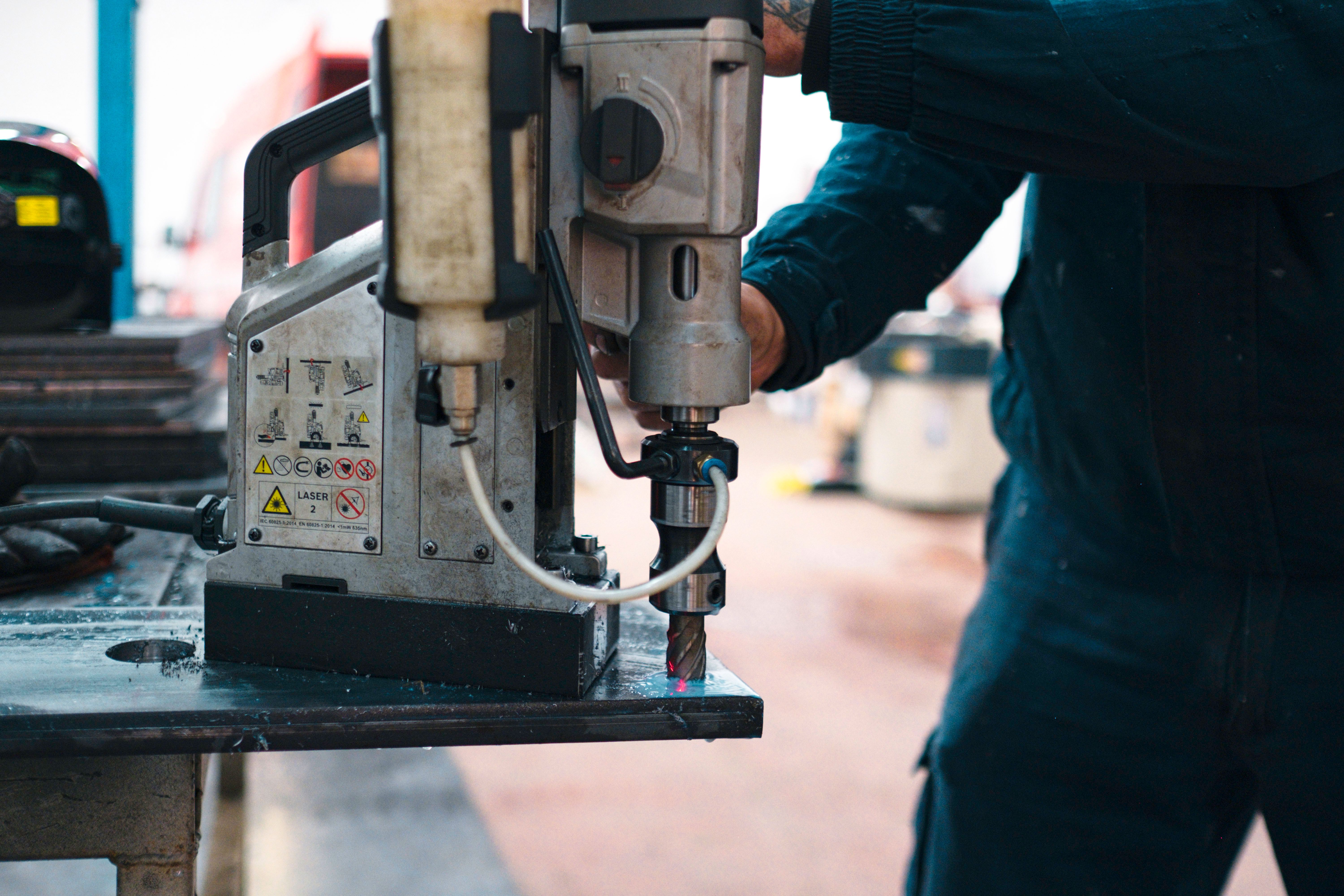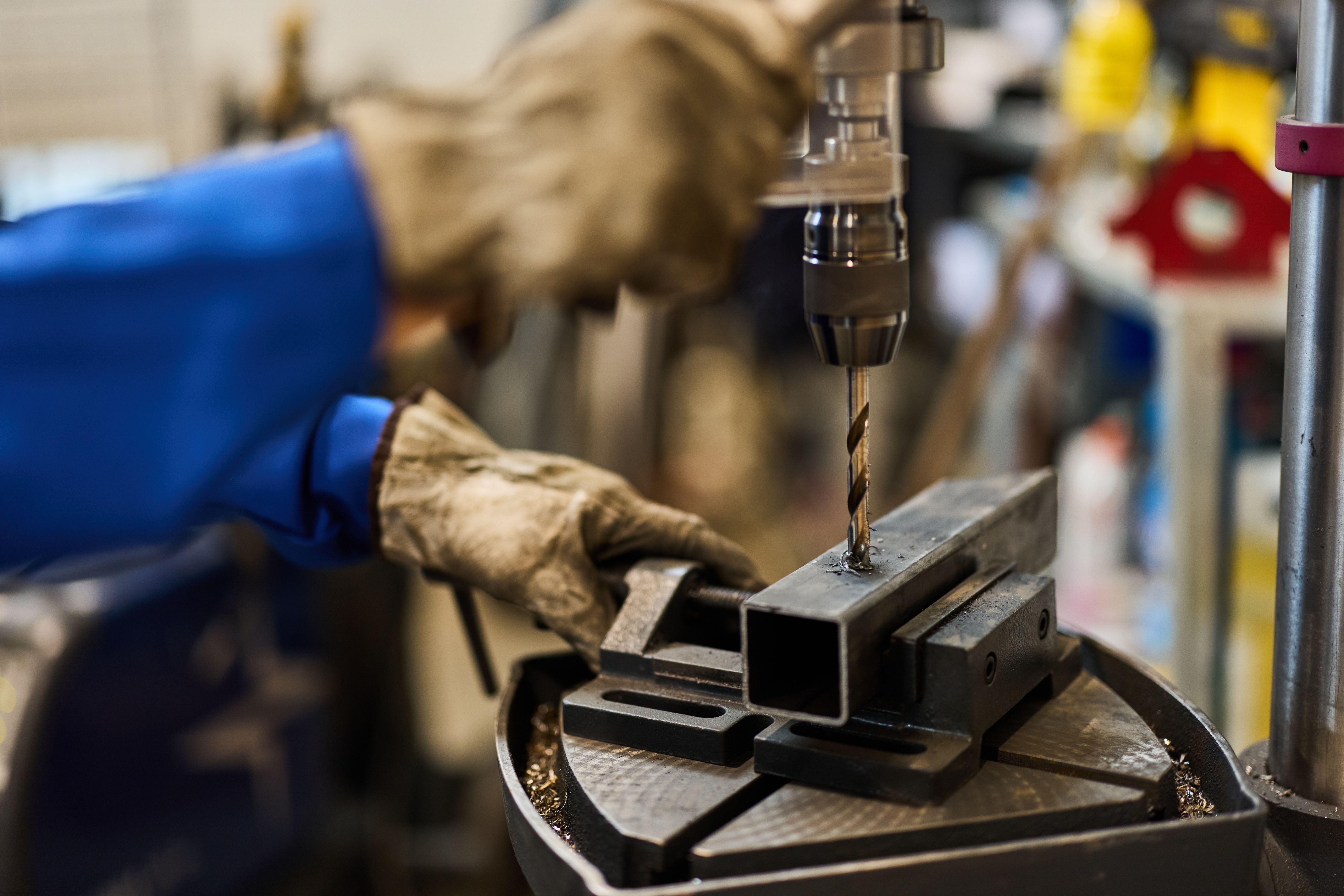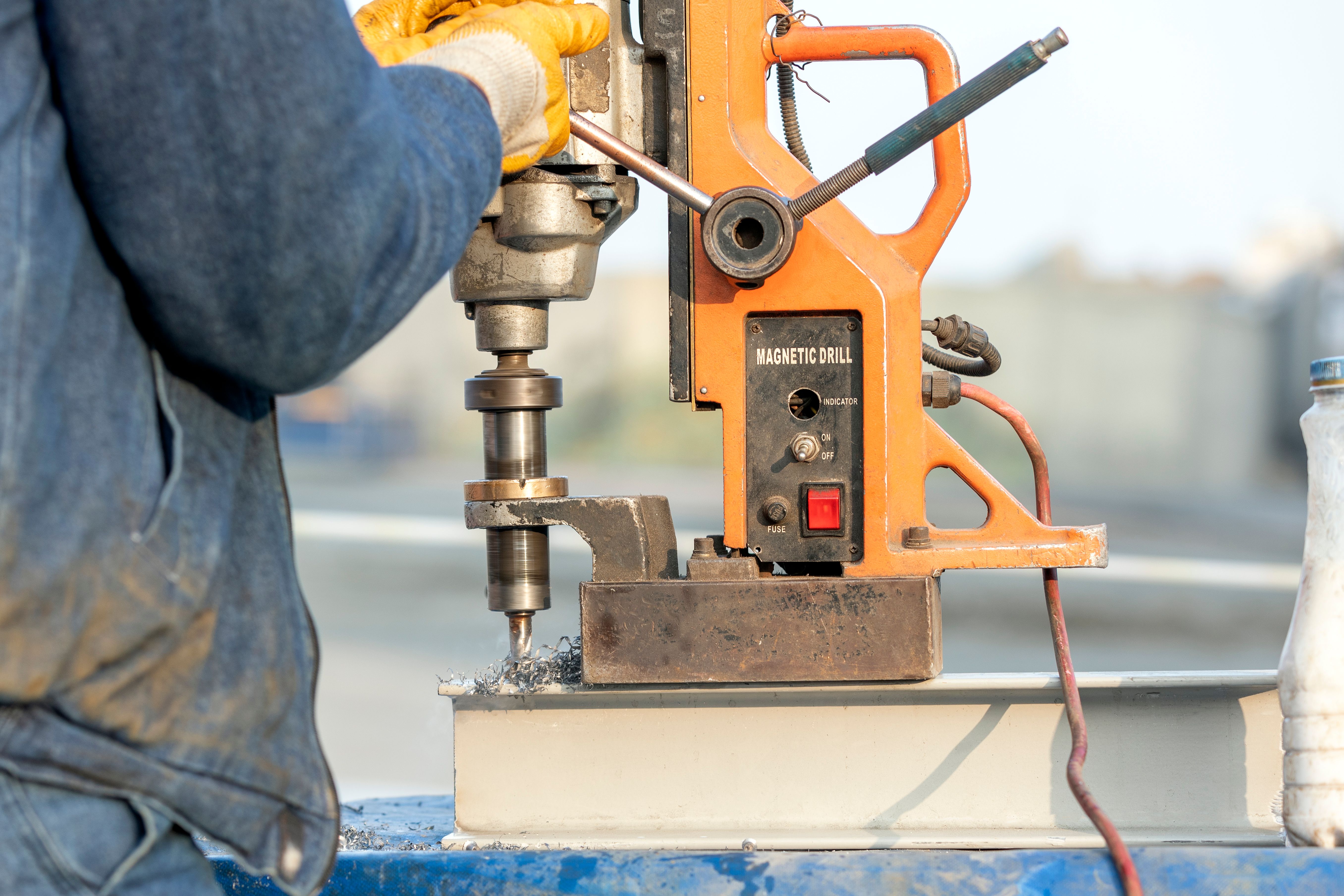Safe Magnet Drill Usage: A Beginner's Guide
RR
Understanding Magnet Drills
Magnet drills, also known as magnetic drills or mag drills, are versatile power tools that offer precision and stability when drilling through metal surfaces. These tools are essential in construction, manufacturing, and various industrial applications. However, for beginners, using a magnet drill can seem daunting. In this guide, we will cover the basics to ensure safe and effective usage.

Setting Up Your Magnet Drill
Before you start using a magnet drill, it’s crucial to properly set it up. Begin by ensuring that the surface you plan to drill is clean and flat. This allows the magnetic base to adhere firmly, providing stability during operation. If the surface has any debris or uneven areas, clean and level it as much as possible.
Next, inspect the drill and its components for any signs of damage or wear. Check the power cord for any frays, and ensure that all bolts and screws are tightened securely. It’s also a good idea to have a quick look at the drill bit to confirm it's suitable for the material you're working on.
Safety Precautions
Safety should always be your top priority when operating any power tool. Before you begin drilling, make sure you’re wearing appropriate personal protective equipment (PPE), including safety goggles, gloves, and ear protection. This gear helps protect you from flying debris and loud noises.

It’s important to ensure that the power source is compatible with your drill's requirements to avoid any electrical hazards. Also, keep in mind that the magnet drill should only be used on ferrous materials; attempting to use it on non-metallic surfaces can lead to accidents or tool damage.
Operating the Magnet Drill
Once everything is set up and you’re equipped with the necessary safety gear, you can begin drilling. Position the magnet drill over the desired drilling spot and activate the magnetic base. This step secures the drill in place.
After engaging the magnet, start the motor but avoid applying excessive pressure. Let the drill bit do the work, and maintain a steady pace for a clean cut. Remember to keep your hands away from the bit at all times during operation.

Maintenance Tips
To ensure the longevity of your magnet drill, regular maintenance is essential. After each use, clean the drill thoroughly to remove metal shavings and dust. Lubricate moving parts as recommended by the manufacturer to keep them functioning smoothly.
Periodically check the condition of the drill bits and replace them as needed. Dull or damaged bits can lead to inefficient drilling and increased wear on the tool. Additionally, store your magnet drill in a dry place to prevent rust and corrosion.
Troubleshooting Common Issues
Even with proper care, you may encounter some common issues while using a magnet drill. For instance, if the magnetic base isn’t holding firm, check for any debris between the base and the surface. Ensure that the power supply is stable and that the electrical connections are secure.
If your drill is not cutting efficiently, inspect the bit for sharpness and compatibility with the material. Should you experience motor issues, consult the user manual or reach out to a professional for assistance.
Conclusion
By following these guidelines, beginners can confidently use magnet drills safely and effectively. Remember to prioritize safety, maintain your equipment regularly, and troubleshoot issues promptly to ensure optimal performance.
